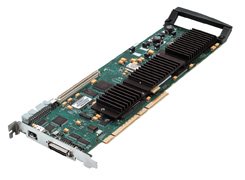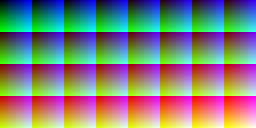Digital Camera History
Ever been curious about digital camera history?
For many, digital photography means consumer digital cameras, and that means from about the late 1990s onwards.
But it wasn't always so. Here, Norman Breslow takes us through the early days of digital imaging. And when I say early . . .
Digital Camera History - Digital Photography Before Digital Cameras
by Norman Breslow
Part One (Disclaimer)
The ability
to make a digital photograph is dependent on a number of component parts
being available.
These components, in no particular order,
include:
- a computer,
- a graphics board capable of displaying many
different colors at the same time,
- computer monitors capable of displaying enough
colors to show a photographic quality image,
- a means for getting an image into a computer in
a form the graphics board and monitor can recognize and display,
- computer programs capable of making adjustments
to the image and coordinating the various components of the digital
photography system,
- a means for getting the digital image out of the computer.
Almost all of these factors were in place and
available to the public by 1988. However, the quality of these various
component parts were inadequate to produce a photographic image that
approached the quality of a standard "wet" photograph made with film and
chemicals by a competent professional photographer.
Regardless of the low quality, a computer photograph could be made, and improvements over time have made today's digital photographs superior to those made by wet photography. Or at least superior when made by those who have the various skills necessary to make a high quality digital photograph.
Digital Camera History - The TARGA Graphics BoardsIn this first part
of "Digital Photography Before Digital Cameras", I want to concentrate on
the graphics board.

The earliest home computers
designed for business use could only display a very limited number of
colors/grays.
By the early 1990's, most graphics cards and most
monitors could display 8 or 16 colors or shades of gray.
Hardly
enough to create a photographic looking image, but enough to make bar and
pie charts and graphs for use by businesses, and for making cartoon
looking graphics.
However, beginning in 1984, the telephone
company AT&T began developing, in their Graphics Software Laboratory,
which was known as AT&T GSL, a number of graphic boards for use with
the IBM PC and Macintosh II series of computers.
These boards,
marketed under the name Truevision, were capable of displaying a large
number of colors/grays. In 1988 this division of AT&T was bought by
its managers. The graphics boards they marketed at that time were called
TARGA boards. TARGA was an acronym which stood for
Truevision Advanced
Raster Graphics
Adapter, a technical but descriptive term for those
graphics boards.
The TARGA-M8 board could simultaneously display
on a monitor 256 shades of gray OR 256 colors out of a total palette of
16,777,216 colors (24 bit color), but not both grayscale and colors
simultaneously.
The 256 grayscale would be enough to produce a
grayscale photographic image, but the 256 colors were not enough to
produce a decent color photograph.

Digital Camera History.
An illustration of the effect of reduced colours. On the left the original image, on the right the same image but with reduced colours.
The TARGA-24 board could
simultaneously display a whopping 16,777,216 colors (24 bit), which is the
standard number of displayable colors for today's computers.
The
jump from the 16 color images displayed with the standard graphics boards
of the day to those which could display 16,777,216 colors was astounding.
There were some problems
with both of these boards.
- First, computer monitors were not up to the
task of handling the large numbers of grays and colors, nor could they
handle the electronic frequencies the boards needed to operate at.
- Second, being able to display and manipulate that many colors did
nothing to solve an existing problem of how to get an image into the
computer in the first place. Digital cameras and scanners were about as
rare as hen's teeth, and extremely expensive. (More about these factors
in a later part.)
While it was technically possible to
have a digital image inside your computer, it was not very practical,
except for governments, universities, very large businesses, and very rich
hobbyists who could afford the high cost of the low quality components
that were available.
The TARGA-M8 did have the ability to easily
video grab an image from a B&W video camera, but video grabbing a
color image would only capture 256 colors, far to few to create a
continuous tone color photograph. The TARGA-24 did not have any video
grabbing capabilities.
The TARGA-16
graphics board was capable of simultaneously displaying 32,768 colors (15
bit color). This board was the one of choice by those early digital
photography enthusiasts, because in addition to simultaneously displaying
a lot of colors, it included a means to get an image containing all 32,768
colors into the computer.
 Digital Camera History.
Digital Camera History.
A represention of the 32,768 colours possible using 15 bit colour
The TARGA-16 had a built-in
video grabbing capability. A color image either from a video tape, or from
a live television picture, or from a live image sent into the graphics
board by a video camera, could be grabbed and digitized with the click of
a mouse when using appropriate software.
But what software was
needed? Digital camera history continues . . . »»» (coming soon!)
Digital Camera History - disclaimer:
Yes, digital photography did exist before
there were digital cameras. I am attempting to give an overview of
the very early days of digital photography, and not write a book on
the subject.
I will not go into great detail, but just hit
the "high spots" and concentrate on products which were of practical
value to the early digital photographer. This will be helpful for
your understanding of the problems involved, and how far digital
photography has come in the past 25 years.
I will omit
discussing various products because they were of no practical value.
For example, when I mention that there were no practical methods for
getting a digital image into or out of a computer, I am emphasizing
the Practical- Ya see, by 1990 Kodak did have a B&W thermal (dye
sub) printer they sold for $18,000, and a color version for $25,000,
both in 1990 dollars. You figure in the inflation factor.
The prices of these printers were (and still would be) so high that the equipment was not of practical value for the digital photography enthusiast, and so products that weren't practical are not being mentioned, or glossed over when mentioned.Return to top
|
return from
digital camera history to digital photography tips home
|

Who are the frustrated
digital SLR owners?
"Taking photos has been my passion for decades.
I used to own a film SLR and loved the quality photos from it - better than anything a compact could produce.
And then I went digital (after saving up enough!).
The benefits of digital photography with the quality of a SLR - I was taking amazing pictures!
But other SLR owners I talked to were disappointed.
I soon found out the reason why - they'd bought a digital SLR because they wanted the quality, but never learned how to use it.
They were hopelessly bashing buttons trying to get great shots.
I realised they can't be alone and so I set about helping them.
The result? After a year's work I finished "The Digital SLR Guide"...
|
|



